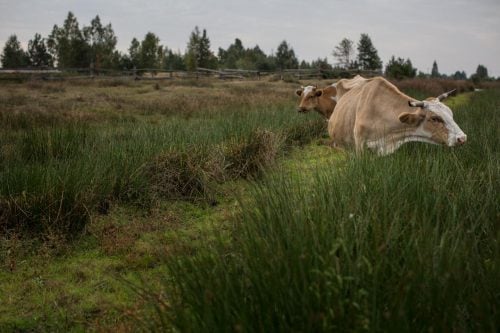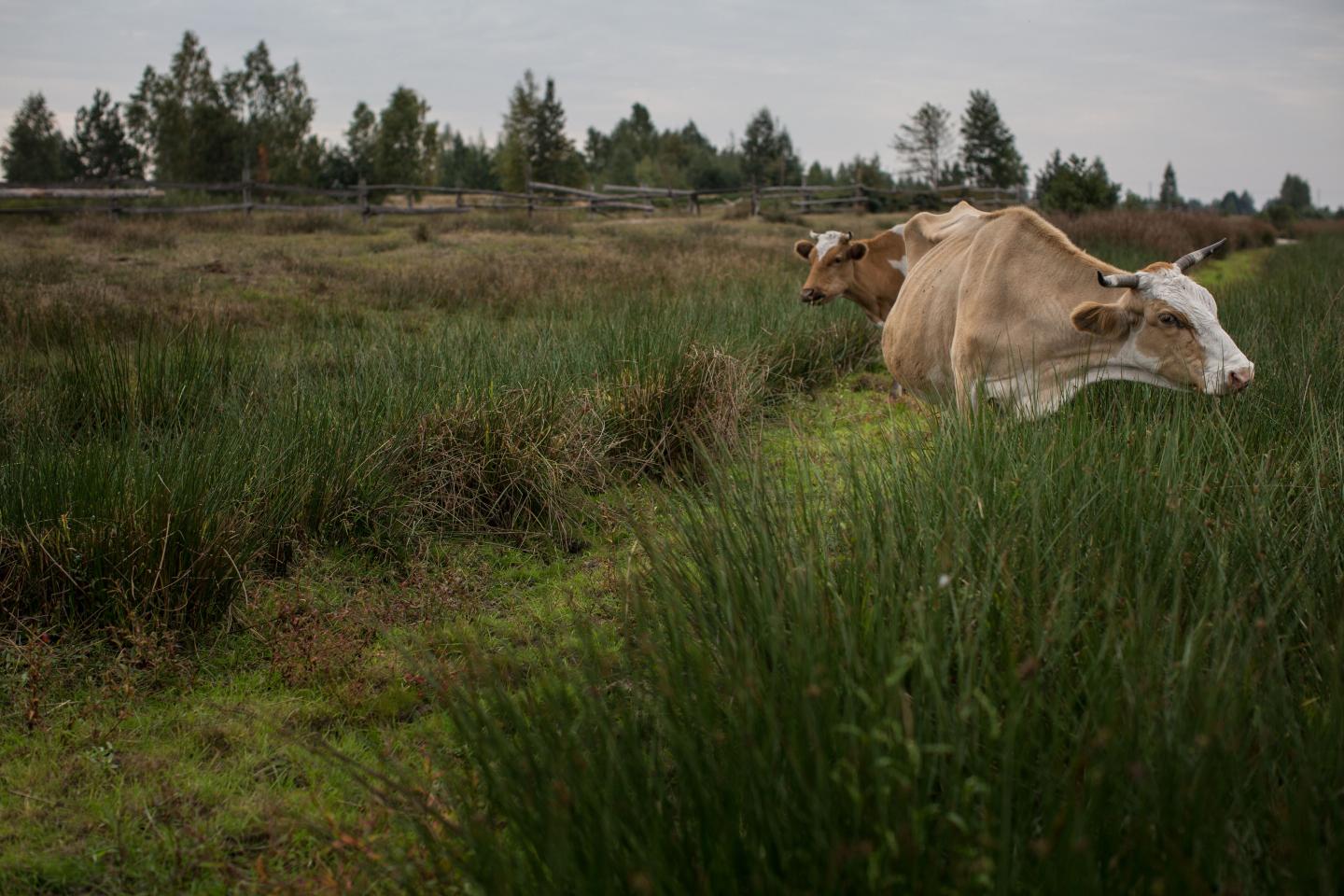Three decades after the Chernobyl disaster, there were parts of the Ukraine in which radioactivity in cow’s milk was up to five times above the safe limit.
Researchers at the University of Exeter in the United Kingdom and the Ukrainian Institute of Agricultural Radiology – who took and analyzed the measurements – report their findings in the journal Environment International.
 Cows graze on grasses in marshland in the Rivne region of Ukraine. Credit: Denis Sinyakov/Greenpeace.
Cows graze on grasses in marshland in the Rivne region of Ukraine. Credit: Denis Sinyakov/Greenpeace.
They sampled milk from the Rivne region of Ukraine, which is about 125 miles from where one of the nuclear reactors at the Chernobyl power plant in Ukraine exploded in April 1986.
Together with the fires that accompanied it, the Chernobyl explosion caused the “largest uncontrolled radioactive release in the history of the civil nuclear industry.”
Large amounts of radioactive iodine and caesium ended up being dispersed to parts of Belarus, the Russian Federation, and the Ukraine, and even to parts of Europe.
‘Exceeded permissible levels’
The milk samples came from cows that are reared at homes and private farms and graze on the region’s marshland.
“Many people in the area we studied,” says first study author Dr. Iryna Labunska, of Greenpeace Research Laboratories at the University of Exeter, “keep cows for milk, and children are the main consumers of that milk.”
At six of the 14 sites that they sampled, she and her colleagues found levels of radioactive caesium exceeded Ukraine’s permissible level 100 of Becquerel per litre (Bq/L) for adults.
Eight of the sites exceeded the permissible level of 40 Bq/l for children. Some samples had levels as high as 500 Bq/l, which is more than 12 times the permissible level for children.
The people who live in the affected villages are “chronically exposed to radioactivity that presents health risks to almost every system in the body – especially among children,” states Dr. Labunska.
Although levels of contamination in the soil of the region are not especially high, levels of radioactive caesium build up in staple foods that rely on that soil.
‘Simple protective measures’
The researchers suggest that there are some “simple protective measures” that could reduce the exposure to Chernobyl radioactive caesium fallout.
Giving cows a “radiocaesium binder” called ferrocyn, for example, would reduce the uptake and transfer of radioactive caesium into milk.
Other examples include adding mineral fertilizers to potato fields and feeding uncontaminated fodder to pigs.
Such measures could be done at a cost of under 10 euros per person for the 8,300 or so residents in the villages most affected.
These annual costs would gradually reduce as the levels of radiation drop.
The researchers note that the government of Ukraine did adopt some of these measures following the Chernobyl disaster, but they stopped them in 2009.
However, unless the measures are brought back, some parts of the Ukraine will continue to produce milk with levels of radioactivity above the permissible limit well into the 2040s, they conclude.

